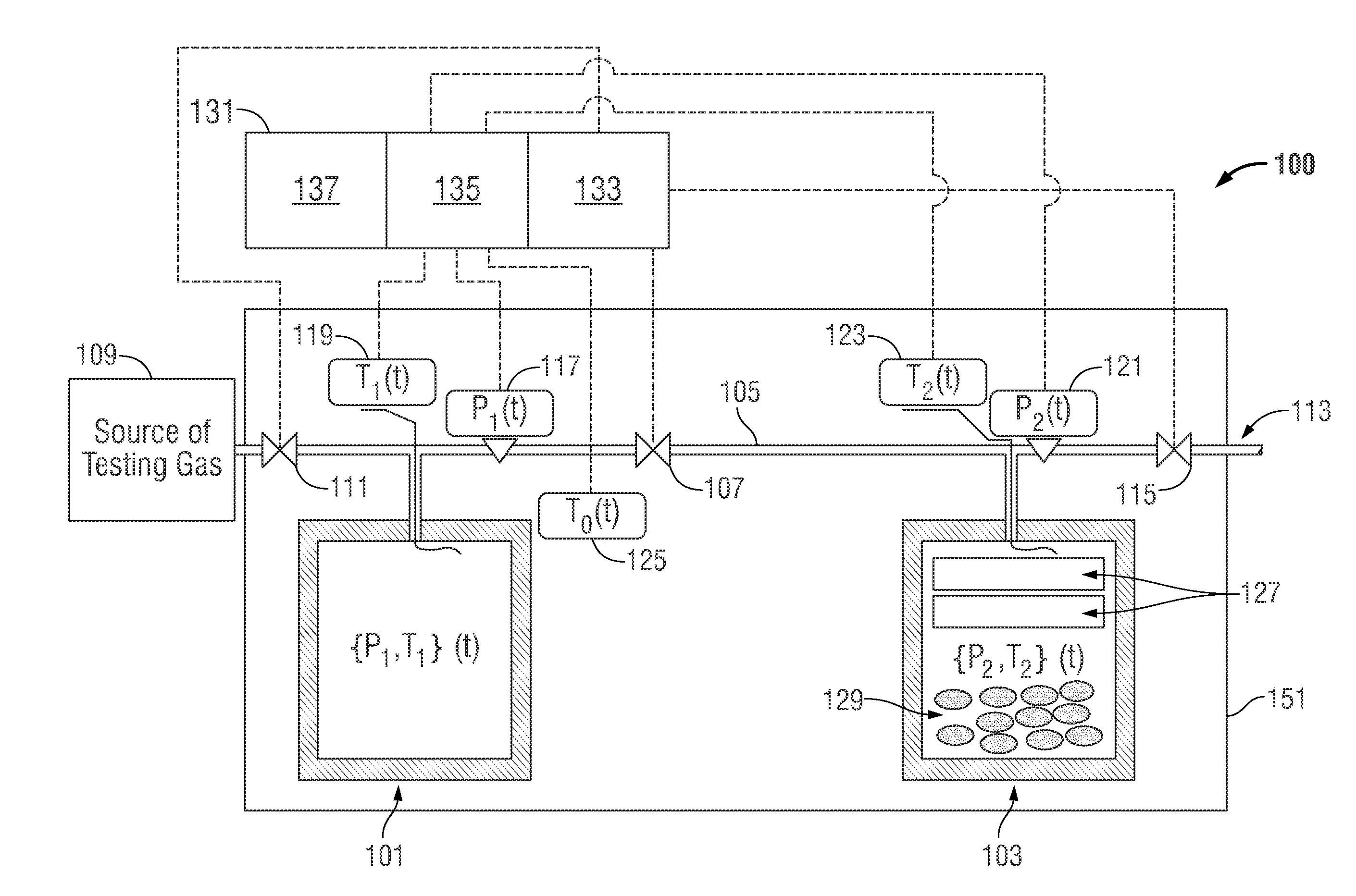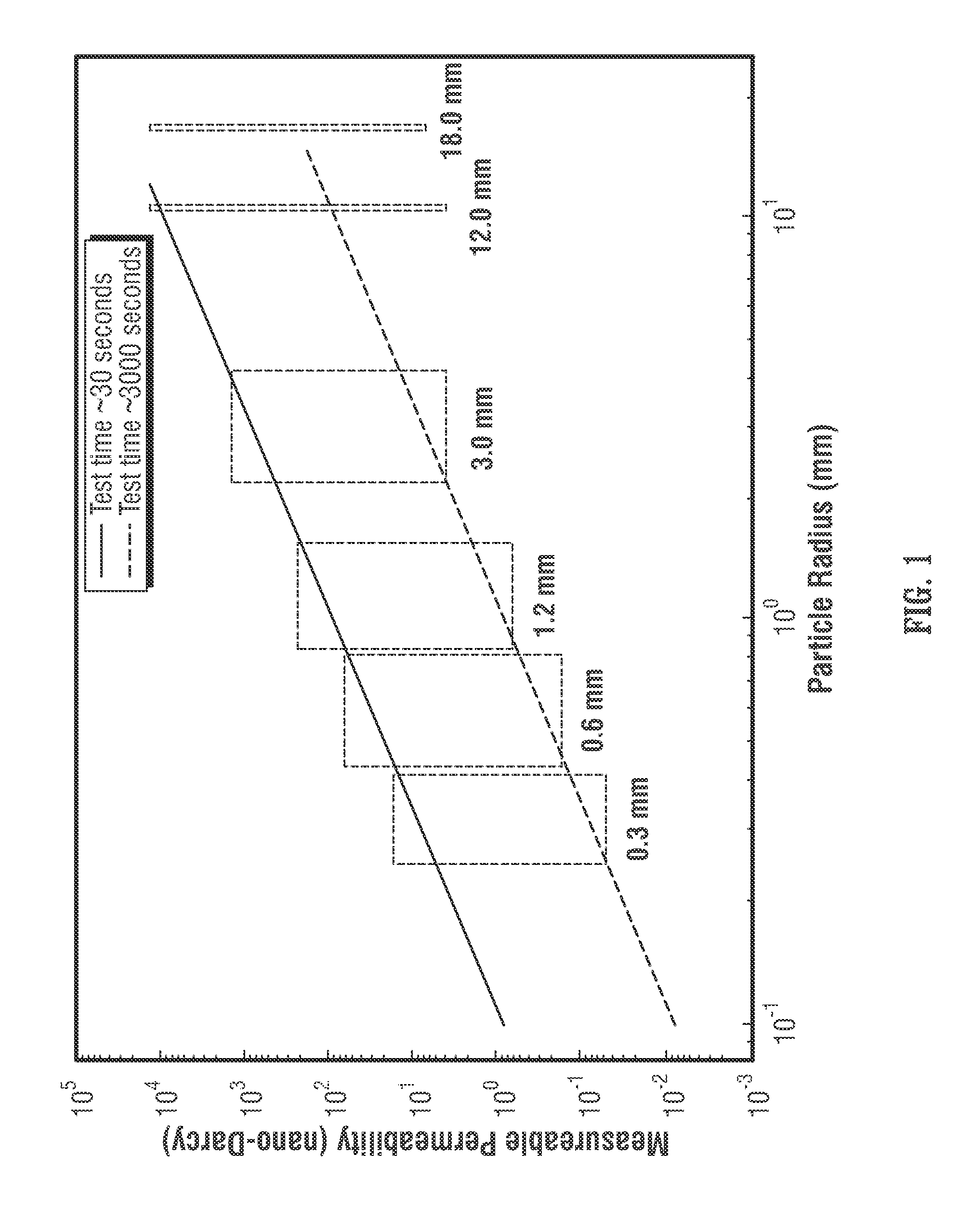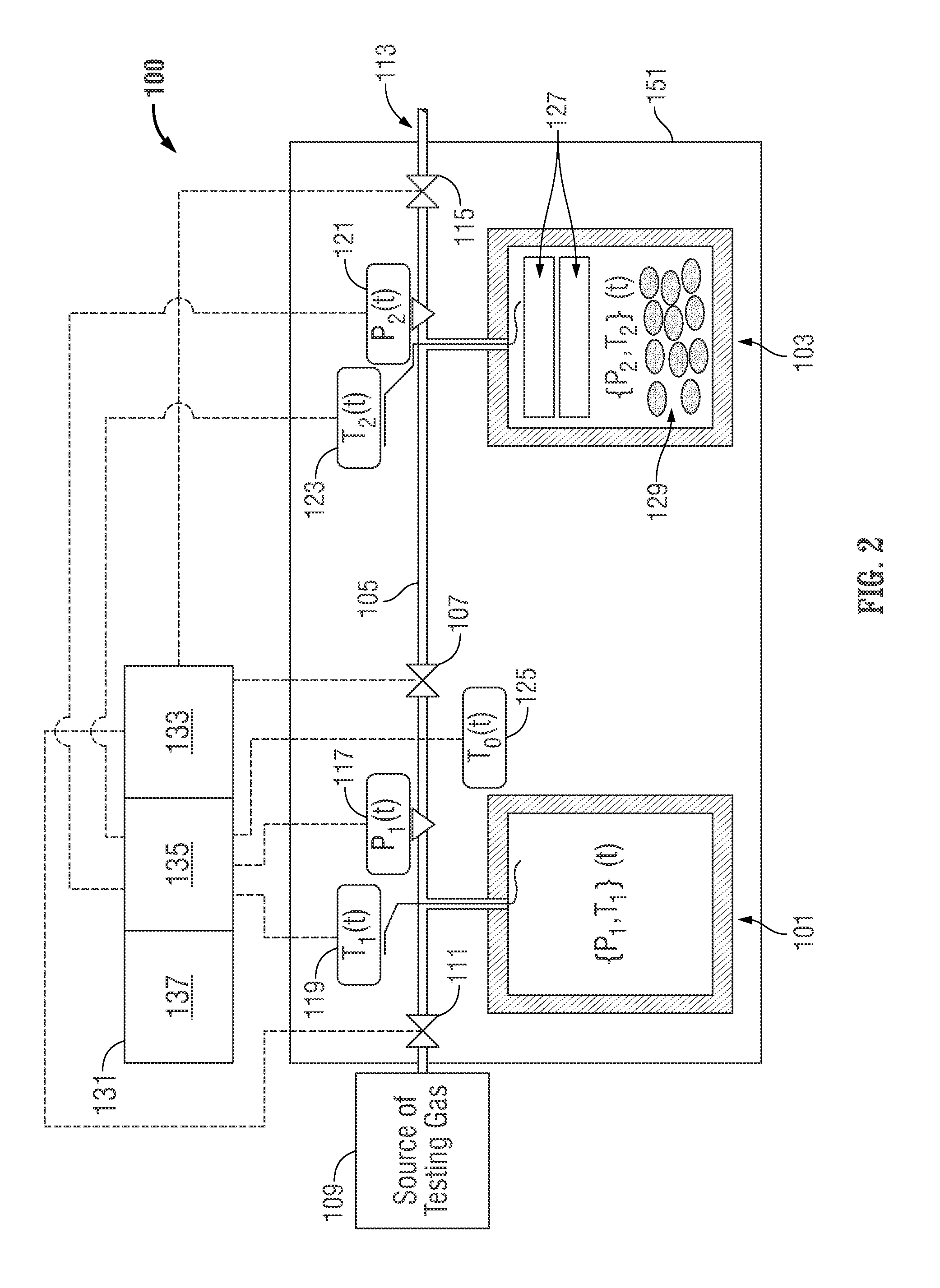Apparatus and methodology for measuring properties of microporous material at multiple scales
a microporous material and measurement method technology, applied in the direction of fluid tightness measurement, instruments, structural/machine measurement, etc., can solve the problems of increasing the size of the sample tested, not being able to use fragments, and not being able to disclose other details about assumptions in their mathematical models, etc., to achieve fast temperature equilibration
- Summary
- Abstract
- Description
- Claims
- Application Information
AI Technical Summary
Benefits of technology
Problems solved by technology
Method used
Image
Examples
Embodiment Construction
[0068]Permeability measurements of tight, microporous materials, and particularly in heterogeneous, low porosity, low permeability, unconventional reservoir rocks, can present challenges. For example, coring and core handling of heterogeneous rock samples can create extensive microcracking. The presence of microcracking directly affects the real permeability of the rock, and the lower the rock permeability, the larger the effect of the induced microcracking. This effect is most important for laminated, low permeability, organic-rich, mudstones, where the organic to mineral contact and the interfaces associated with the laminated fabric are weak contacts that are prone to part during unloading. This effect is less important for conventional, higher permeability rocks. Second, it can take considerable time to detect measureable flow through samples of standard size (e.g., 1 to 1.5 inch (25.4 to 38.1 mm) in diameter and 1 to 2 inch (25.4 to 50.8 mm) in length).
[0069]Two common approach...
PUM
 Login to View More
Login to View More Abstract
Description
Claims
Application Information
 Login to View More
Login to View More - R&D
- Intellectual Property
- Life Sciences
- Materials
- Tech Scout
- Unparalleled Data Quality
- Higher Quality Content
- 60% Fewer Hallucinations
Browse by: Latest US Patents, China's latest patents, Technical Efficacy Thesaurus, Application Domain, Technology Topic, Popular Technical Reports.
© 2025 PatSnap. All rights reserved.Legal|Privacy policy|Modern Slavery Act Transparency Statement|Sitemap|About US| Contact US: help@patsnap.com



